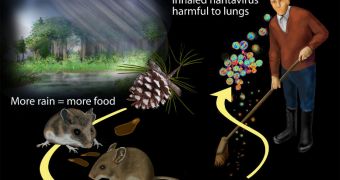The latest issue of the esteemed journal Nature contains a paper showing that biodiversity loss can have negative consequences on the health of the general population. The correlation holds true for both animal and plant extinctions, the report indicates.
In the new research, a team of experts examined the connections that exist between species decline and the onset and spread of infectious diseases in great detail. They found that the two indeed influence each other.
One of the main consequences of biodiversity loss, especially in common ecosystems such as forests and fields, is that microorganisms such as pathogens experience a massive increase in numbers and diversity.
This exposes humans and other species to increased risks of infections, potentially with new strains of various organisms that our bodies and those of other animals are not accustomed to.
Funding for this study was awarded through the Ecology of Infectious Diseases (EID) Program, which is jointly sponsored by the US National Science Foundation (NSF) and the National Institutes of Health (NIH). The Environmental Protection Agency (EPA) also contributed.
The NIH Fogarty International Center and the NSF Directorates for Biological Sciences and Geosciences are the main supporters for the EID Program.
“Global change is accelerating, bringing with it a host of unintended consequences,” explains the NSF EID Program director, Sam Scheiner.
“This paper demonstrates the dangers of global change, showing that species extinctions may lead to increases in disease incidence for humans, other animals and plants,” he goes on to say.
“A better understanding of the role of environmental change in disease emergence and transmission is key to enabling both prediction and control of many infectious diseases,” adds the NIH EID Program director, Josh Rosenthal.
“This thoughtful analysis is an important contribution toward those goals,” the official adds. He explains that most of the species which now disappear are precisely the ones shielding ecosystems from the rampant spread of infections.
The species that manage to adapt and endure are precisely the ones that foster and help transmit contagious diseases, including Lyme disease, the West Nile virus and the hantavirus.
“We knew of specific cases like West Nile virus and hantavirus in which declines in biodiversity increase the incidence of disease,” says expert Felicia Keesing, the first author of the Nature paper.
“But we've learned that the pattern is much more general: biodiversity loss tends to increase pathogen transmission and infectious disease,” adds the scientist, who is an ecologist at the Bard College in Annandale, New York.

 14 DAY TRIAL //
14 DAY TRIAL //